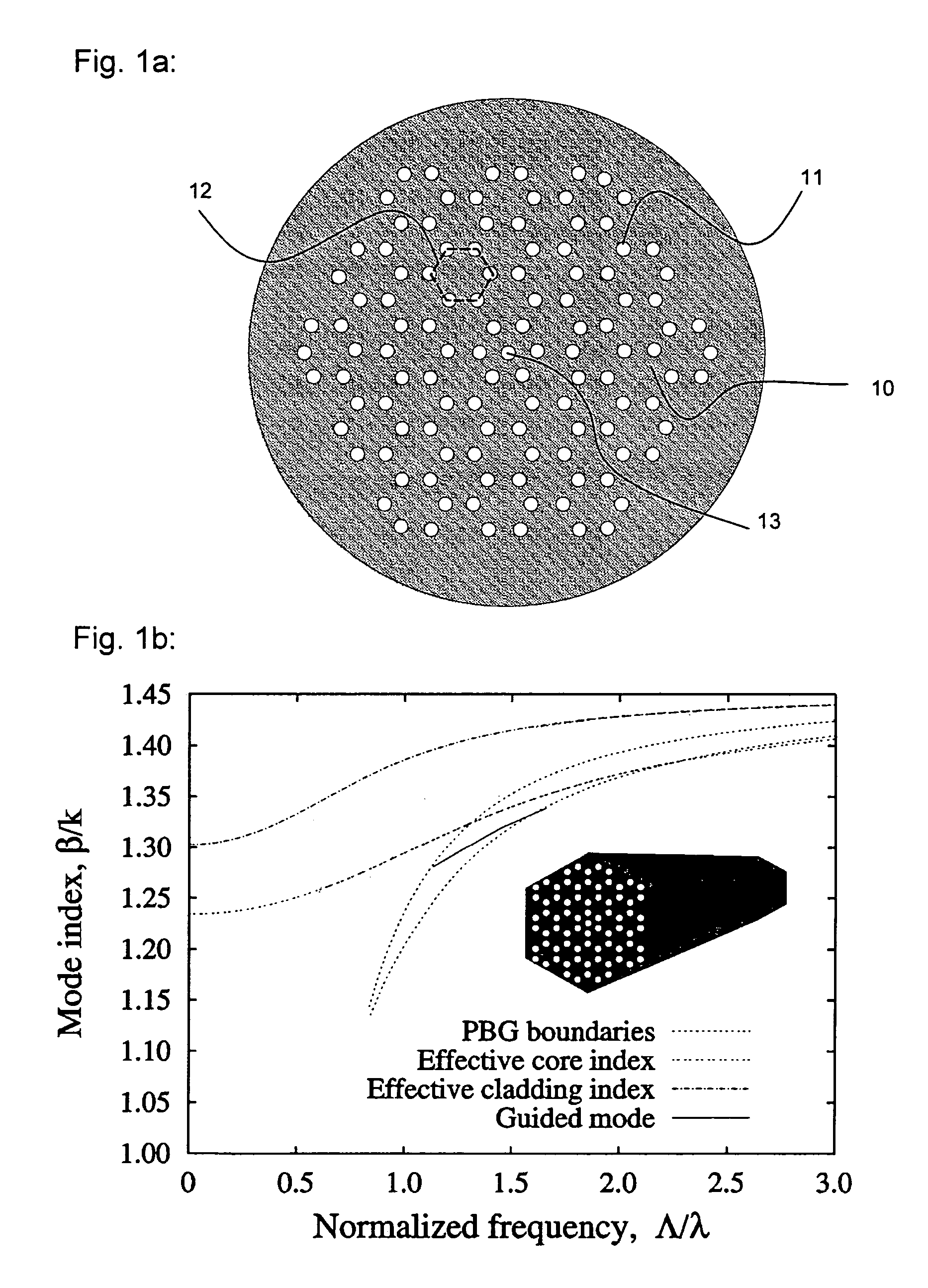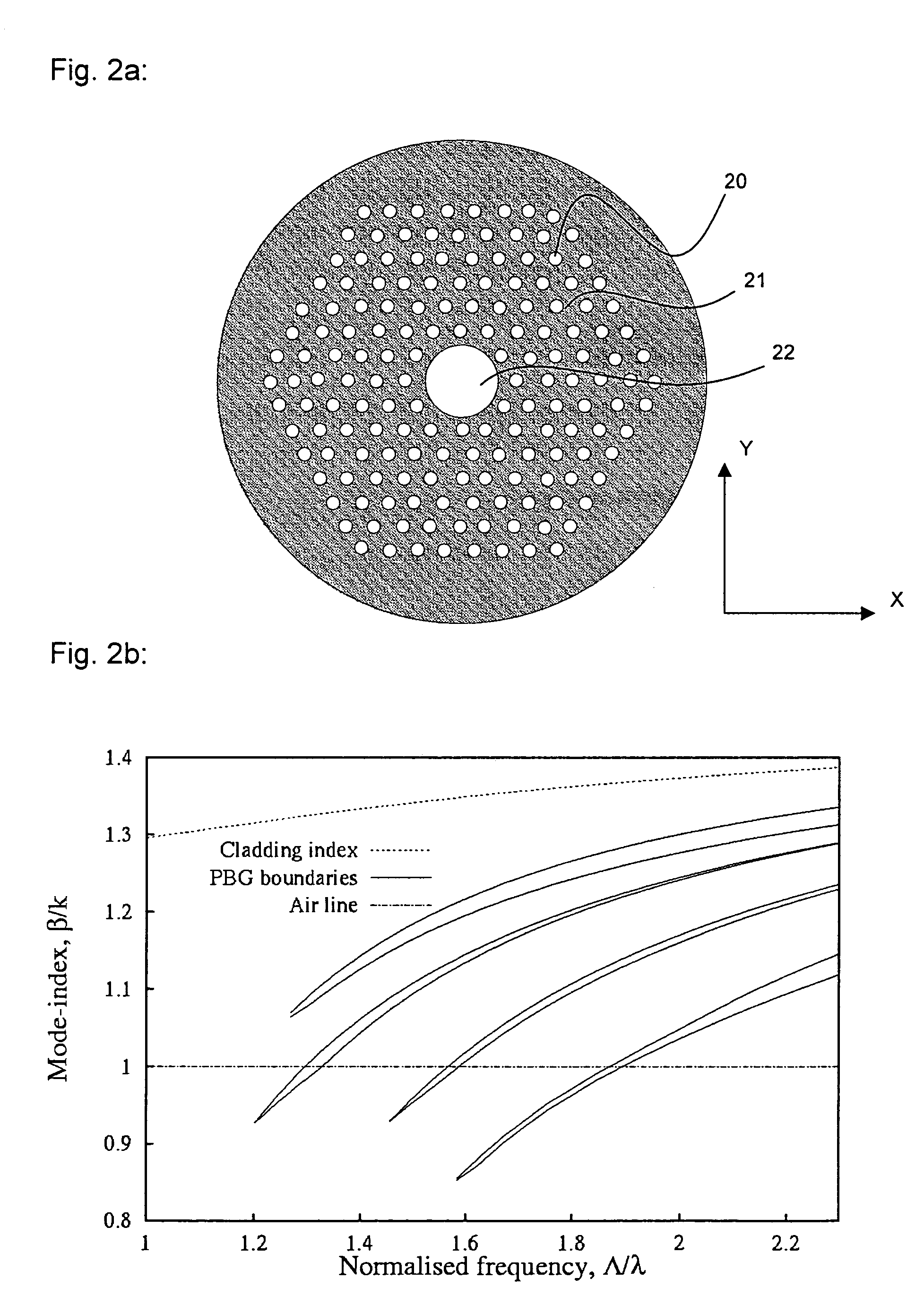Photonic bandgap fibre, and use thereof
a bandgap fibre and bandgap technology, applied in the field of optical fibres, can solve the problems of insufficient refractive index contrast to provide in-plane 2d pbg effects, structures are practically impossible to use, and the fabrication of prior art pbg fibres is hindered, so as to achieve high flexibility, strong dispersion, and large flexibility
- Summary
- Abstract
- Description
- Claims
- Application Information
AI Technical Summary
Benefits of technology
Problems solved by technology
Method used
Image
Examples
Embodiment Construction
[0100]Further scope of applicability of the present invention will become apparent from the detailed description given hereinafter. However, it should be understood that the detailed description and specific examples, while indicating preferred embodiments of the invention, are given by way of illustration only, since various changes and modifications within the spirit and scope of the invention will become apparent to those skilled in the art from this detailed description.
[0101]A typical air-silica PBG fibre known from the prior art is illustrated schematically in FIG. 1a. The figure shows a cross-section of the fibre. The fibre consists of a background material 10 and it is invariant in the longitudinal direction (the direction perpendicular to the illustrated cross-section). The fibre has a cladding region characterized by an array of low-index features 11 that run along the fibre axis. In the prior art, the most commonly used background material is silica and the features are m...
PUM
| Property | Measurement | Unit |
|---|---|---|
| refractive indices | aaaaa | aaaaa |
| wavelengths | aaaaa | aaaaa |
| wavelengths | aaaaa | aaaaa |
Abstract
Description
Claims
Application Information
 Login to View More
Login to View More - R&D
- Intellectual Property
- Life Sciences
- Materials
- Tech Scout
- Unparalleled Data Quality
- Higher Quality Content
- 60% Fewer Hallucinations
Browse by: Latest US Patents, China's latest patents, Technical Efficacy Thesaurus, Application Domain, Technology Topic, Popular Technical Reports.
© 2025 PatSnap. All rights reserved.Legal|Privacy policy|Modern Slavery Act Transparency Statement|Sitemap|About US| Contact US: help@patsnap.com



